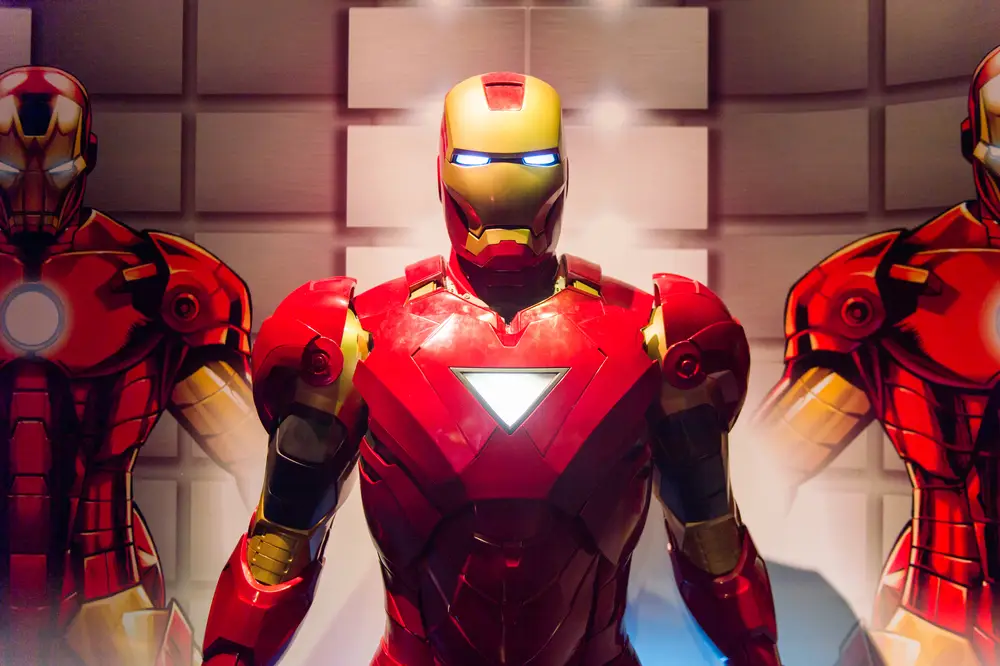 The movie smash hit of the summer is Marvel’s Iron Man 3 and its popularity can be explained on several different levels. The “superhero” in this blockbuster flick is both physically and emotionally scarred, so in many ways, he’s just like you and me. Plus, the action and special effects are non-stop. This science fiction, where the lead character’s human body part is replaced by an artificial part, is science fact at Texas Back Institute. How so? Read on.
The movie smash hit of the summer is Marvel’s Iron Man 3 and its popularity can be explained on several different levels. The “superhero” in this blockbuster flick is both physically and emotionally scarred, so in many ways, he’s just like you and me. Plus, the action and special effects are non-stop. This science fiction, where the lead character’s human body part is replaced by an artificial part, is science fact at Texas Back Institute. How so? Read on.
Artificial disc replacement, pioneered by several spine surgeons at Texas Back Institute, including Dr. Scott L. Blumenthal, is in many ways more futuristic than the suit of iron that brash-but-brilliant industrialist Tony Stark wears to heroic advantage in Iron Man 3. Before delving into the reasons for Stark’s angst and ultimate redemption, we asked Dr. Blumenthal to gives us some insights into the ways he and his colleagues are transforming patients in pain to Iron Men and Women.
Artificial Disc Replacement – Medical Fact not Fantasy
In post-movie interviews fans of Iron Man 3 have said that one of their favorite aspects of the story is the blurring of science fiction and medical fact. Since you have taken a part of the body – the disc that cushions the spinal vertebra – and replaced it with one that is artificial and more durable, what are your thoughts about this advancement?
When I started in medical practice, we talked about the TV show The Six Million Dollar Man. For anyone younger than 30, this was a fictional story about a man who had been critically injured and had many of his organs, muscles and limbs replaced by much stronger artificial ones. At this point in medicine, this replacement of real with artificial body parts is becoming reality, not fantasy. For generations, spine surgeons have been fusing vertebra when the discs wear out or are damaged. Our patients were constantly asking “Why can’t you just replace it?” Well, after much development and testing, now we can. In patients who have back pain resulting from damaged disc we can replace it with one that is man-made. My colleagues and I formed the Center for Disc Replacement and now the fantasy is going to be main stream medicine.
What enabled Texas Back Institute to be at the forefront of this procedure?
Our advantage came from our opportunity to do the FDA testing of this procedure here at our clinic. This procedure had been very popular in Europe for many years (before being considered in the U.S.) and many people with the resources to travel there, were getting the benefit of this technology by going over there. Because we were asked to assist in this testing, we were the first practice to be able develop protocols for the procedure. Our experience here far outweighed other physicians in this country. We started lumbar disc replacement and went on to cervical disc replacement. We discovered extensive evidence that strongly suggested artificial disc replacement speeded recovery, so our patients returned to work sooner. We found this procedure had better outcomes than fusion and the overall costs were less.
What brought about the development of the artificial disc?
It’s a combination of factors. There is substantial patient demand and the technology in the composition of the artificial discs is excellent and continues to get better than it was 12 years ago when we started. Plus, there is a measurable economic benefit to disc replacement as opposed to other procedures.
Do you mean there are economic benefits to patients in the form of cost vs. outcome?
Exactly. This is why the major insurance companies – not known for their investing in medical technology simply because it seems to be good technology – have decided to cover this procedure. They clearly have good data that proves the costs for artificial disc replacement are reasonable when outcomes, long-term recovery and the incidence of future problems are considered.
What other medical advancements – which may seem like science fiction now – do you see becoming medical fact in the immediate future?
I see stem cell therapy becoming an important new frontier for back surgery and specifically disc damage. Patients are looking for different, non-invasive ways to alleviate back pain and these stem cells – some harvested from the patients suffering from the pain – have the potential to change the way we treat damaged tissue.
Watch Dr. Blumenthal comment on technology and spinal care.
What Makes Iron Man 3 So Interesting?
As the advertising blurbs about Iron Man 3 note, “the movie pits brash-but-brilliant industrialist Tony Stark (also known as) Iron Man against an enemy whose reach knows no bounds. When Stark finds his personal world destroyed at his enemy’s hands, he embarks on a harrowing quest to find those responsible. This journey, at more »every turn, will test his mettle.” Whew! All that in about 2 hours!
As fans of the three movies know, the first of the Iron Man films revealed Stark as a clever, resourceful scientist-adventurer-tycoon who launched his super-character and super-suit while trying to escape from a platoon of Middle Eastern terrorists. This film was followed by a sequel called, Avengers , which did not receive the same level of enthusiastic critical review or box office support. However, the third installment – Iron Man 3 – has critics and, more importantly, paying customers, raving.
Part of the reason this current Iron Man saga has been so successful has to do with the evolution of the lead character played brilliantly by Robert Downey Jr. This star has had his own, well-chronicled personal challenges and the Tony Stark character he plays in the movie is experiencing many of these same – all too human – difficulties.
Iron Man 3 is replete with action, special effects and the superhero formula that seems to cure all boredom. However, the lead character spends less time in his iron suit, fighting bad guys and more time contemplating his place in the universe. One reviewer was on the mark when he noted Stark discovers the answer to the question that has been haunting him: Does the man make the suit or does the suit make the man?
Watch the Iron Man 3 trailer here.
Since Dr. Blumenthal and his colleagues at Texas Back Institute are turning what was medical science fiction a few years ago into medical fact today, we had to ask him if he had a favorite superhero when he was growing up? His answer should give hope to those who don’t particularly care for Iron Man, but do long to go where no man has gone before!
Blumenthal notes, “Actually, I was not a big fan of superheroes. I’m more of a Trekkie. Fortunately, the new Star Trek – Into the Darkness opens tomorrow and I will be there!”


